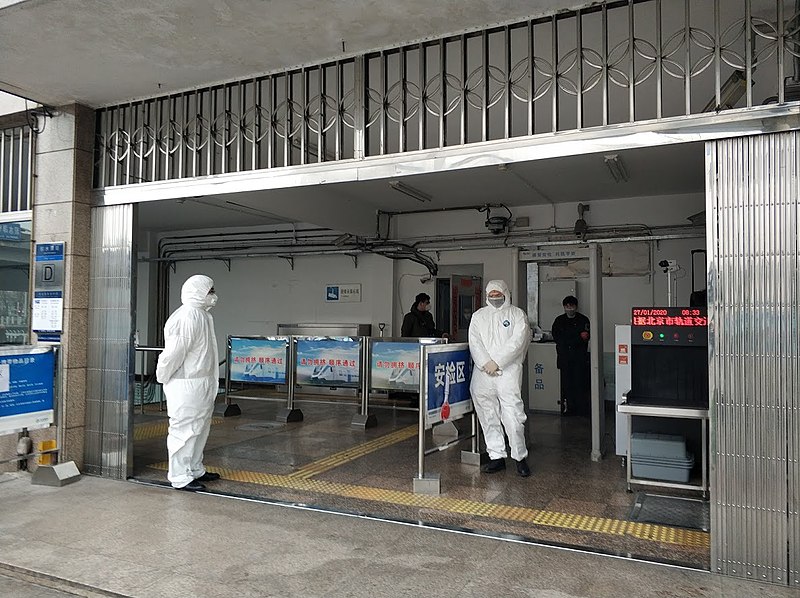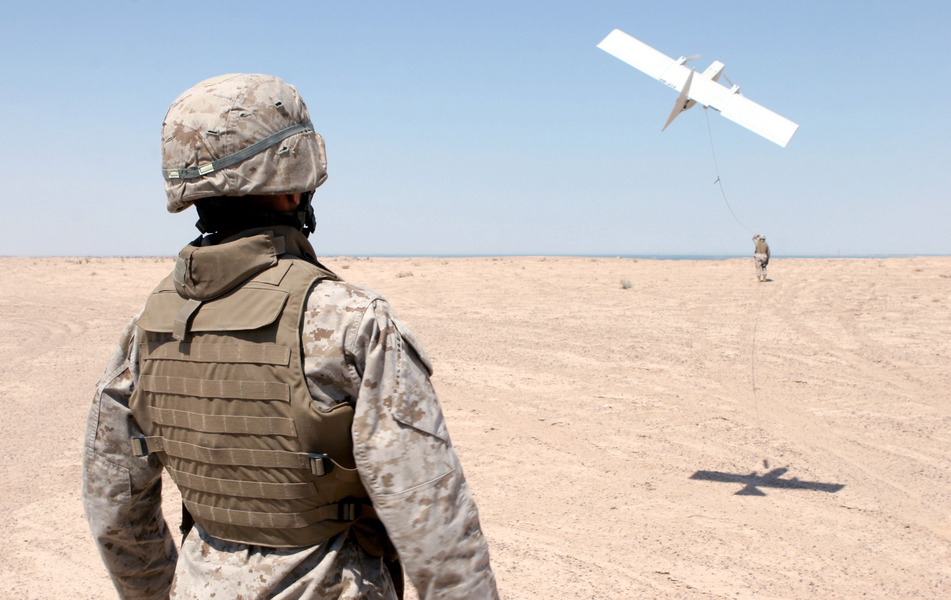China Responds to the Coronavirus With an Iron Grip on Information Flow
China paints its response to the coronavirus outbreak as an unmitigated success. The reality appears to be more mixed. What contributed to some of China’s failures?

Published by The Lawfare Institute
in Cooperation With

On March 4, China’s state-run Xinhua News Agency published an article titled “With Reason on Our Side: The World Should Thank China,” which unequivocally praises the Chinese government’s handling of the outbreak of the novel coronavirus and the infectious disease, COVID-19, that it causes. But does the Chinese response actually merit international praise, let alone expressions of thanks?
Yes, there are certainly many selfless and hard-working health care professionals and other individuals within China who deserve admiration for their roles. But there have also been criticisms about the way in which the government handled the outbreak, particularly during the first several weeks after the discovery of the virus. Reports of doctors in Wuhan who were ordered into silence and punished in one form or another for speaking out bolsters the validity of these criticisms, particularly as they pertain to information controls. Such criticisms raise an important question: Was the Chinese government’s purportedly botched initial handling of the virus the result of a bureaucratic mishap or a manifestation of more “systemic” issues within its authoritarian system?
The government’s handling of the virus has revealed the extent to which a desire to maintain control over the country drives the choices of the central government. This has manifested as a helpful impulse to control the outbreak (to the extent possible). But it has also meant sweeping efforts to control the narrative surrounding the outbreak, as well as control the thoughts, movements and actions of the Chinese people. Over the past couple of months, it appears that the central government has increasingly conflated the two forms of control, with the government ultimately prioritizing control over the narrative instead of focusing on their efforts to control the outbreak. This has led the government to take a number of steps that at best are unnecessary to stop the outbreak and at worst are harming efforts to arrest the virus’s spread.
To be sure, the Chinese government has implemented concrete travel restrictions and other measures to limit the spread of the virus that appear to have been at least somewhat effective. Other countries appear to have had success with stemming the virus without resorting to quarantining entire cities. Unfortunately, the Chinese government is actively closing space to debate (as discussed below) and parsing the difference between successful policies and blunders, and is instead focusing on portraying the government’s actions as positive.
One of the key criticisms of China’s early responses to the coronavirus outbreak is that the government engaged in information suppression that hampered the capacity to develop effective local, national and international strategies to mitigate the spread and impact of the virus. Information controls impact the spread of the virus in a number of ways. For one, the government devotes some of its already limited resources to silencing online speakers. These information controls also prevent officials, health care practitioners and individuals from knowing about and being able to take appropriate precautions, and they hinder officials across China and the world from being able to coordinate a response. This dynamic appears to be a feature of, rather than an exception to, China’s system. The government’s control, regulation and suppression of speech involves complex, distributed institutional arrangements that incentivize over-censorship and more hardhanded tactics than are permissible in other nations.
As in other countries, the central government in China uses intermediaries, such as large internet platforms like WeChat, to assist in the governance of speech and discourse. The central government employs vague laws and relies on intermediaries to serve as the gatekeepers of online speech. This results in collateral censorship driven by both legal and political mechanisms and incentives. In the U.S., collateral censorship usually refers to an intermediary (such as an online platform like Facebook or Twitter) refusing to allow on its website certain content made by third-party users for fear of legal liability. Most U.S. examples of legal liability are generally civil in nature, such as libel and copyright suits. Even then, Section 230 of the Communications Decency Act protects most platforms from liability in most instances.
This phenomenon exists in China with additional dynamics. Rather than limiting liability for intermediaries, China is increasingly requiring these intermediaries to enforce the government’s censorship requirements. In addition, the Chinese government employs a series of vague rules that give both local and central government authorities large capacities to limit speech by a combination of legislative and technical prior restraints. The Chinese government also uses criminal and administrative rules to control speech.
Ultimately, though, it is still intermediaries that end up doing most of the censoring. Due to the capricious nature of the laws regulating speech as well as a lack of clarity regarding enforcement mechanisms and recourse, intermediaries censor out of fear of political liability in addition to legal liability. Some content is more expliciltly illegal, such as pornography. Other content, such as information about the spread of the coronavirus, is arguably not clearly illegal but rather politically sensitive. In other words, speech intermediaries in China could be in trouble with the government for violating more clearly articulated prohibitions as well as for running afoul of arbitrary and a priori unknowable boundaries for content that could be politically harmful, even if that content was not necessarily illegal at the time of its production and dissemination. Predicting what will be politically harmful is a difficult, if sometimes impossible, task. This leaves intermediaries with few options beyond requesting government advice, obeying secret government orders to censor specific content at any given time and over-censoring information just in case.
Often, it is not clear if content is censored by the government or by an intermediary attempting to anticipate the government’s wishes. These dynamics, in addition to leading to enhanced collateral censorship, also likely reduce intermediaries’ and companies’ institutional capacities to distinguish valuable and true information from false and misleading information. A more important consideration is whether information will be considered politically sensitive and/or dangerous. Examples include the censoring of LGBT-related content on China’s Twitter-like Weibo, the removal of images of Winnie the Pooh because bloggers were comparing him to Chinese President Xi Jinping, and the temporary banning of the letter “N.” None of these topics was explicitly “illegal” so much as actually or potentially politically sensitive.
So what does this mean in the coronavirus context? This lack of clarity regarding what should be censored, who censors it, and the lack of real recourse to pushback against censorship have likely reduced various authorities’ ability to combat the coronavirus in a number of ways. In particular, the public lacked adequate information about the virus, and misinformation spread more easily. This dynamic also further incentivized bullying and hardhanded tactics on the part of local government officials, in their actions both to combat the coronavirus as well as to suppress information related to the virus.
For one, this dynamic has encouraged a rash on-the-ground response. Local officials do not necessarily have clear mandates regarding the most appropriate mechanisms for slowing the spread of the virus. (Indeed, to a certain extent, this is a problem in other countries as debates continue about the appropriate scope of testing, let alone other measures.) At the same time, government officials can face severe consequences for botching or appearing to have botched their response to the virus. These same officials do not fear consequences for impinging on civil liberties. As a result, government officials have resorted to more brutal enforcement mechanisms in the name of trying to contain and control the spread of the virus, including the inconsistent enforcement of quarantines and capricious, potentially ineffective public health policies that differ across locales. Such mechanisms may or may not be effective to varying degrees in slowing the outbreak. Either way, they certainly exacerbate human suffering beyond the deaths and economic hardship brought on by the virus.
The problems are even more grave in the information space. It appears that in the initial weeks after the discovery of the virus until at least the end of January, China’s structures of information control also hampered the flow of necessary information concerning the virus and how to arrest its spread. While doctors in Wuhan quickly identified the virus and doctors in Beijing and Shanghai isolated and sequenced the disease, they were prohibited from sharing information about the new disease. As a result, people carried on with normal life, unaware that a novel virus was spreading in their community. The Wuhan City Government hosted a banquet of 40,000 people, providing ample opportunity for the virus to spread unchecked.
As fast as the doctors were to identify, isolate and sequence the virus, institutional mechanisms to control information flows were at least as fast. The “intermediaries” working to censor the information included health institutions as well as internet platforms. According to a pseudonymous reporter based in Wuhan, the Wuhan Health Commission prohibited sharing information about the virus until at least the end of December. In January, social media platforms such as YY and WeChat ramped up their censorship of content related to the virus and the government’s response to it. YY started censoring keywords related to the virus while WeChat “broadly censored coronavirus-related content … and expanded the scope of censorship in February” according to the Citizen Lab. It is unclear if health organizations in Wuhan and online platforms received explicit orders from the central or local governments to censor information, did so on their own accord, or some mix of the two. It is clear, however, that the system of information control currently in place incentivizes both government orders and prior restraint. And it is undeniable that such controls, in this case, limited the spread of vital information that could have better informed health care and government professionals.
The facts on the ground also indicate that China’s systems of information control effectively combined law and politics in ways that not only suppress potentially valuable information but also encourage the active production and dissemination of false information. This “false information” generated by government and health officials is not necessarily intended to deceive but, rather, is produced in an attempt to adhere to requirements from above, even if the data does not conform to reality. Government and health care officials make these posts to stay in the government’s good graces. The fact that people are deceived and/or receive misinformation is incidental.
One example of local officials covering up dire circumstances with a sympathetic-looking facade comes in response to economic troubles triggered by COVID-19. Faced with a slowing economy, companies and local government officials have been ordered to get the economy back in order while preventing the spread of further COVID-19 cases. According to Caixin, some local companies have responded by fraudulently boosting metrics of productivity, such as by leaving lights on in empty stores and factories, or turning on manufacturing equipment even if there are no workers to run it. Some companies do this because of conflicting and contradictory orders: The central government orders them to start up and run again, the local government forbids them from doing so. It does not appear that the companies have explicitly set out to mislead anyone, but the governance structures in which they operate leave them with a feeling of having little choice—attempts to comply with directly contradictory sets of instructions result in a facade that does not correspond to reality.
The South China Morning Post reported a similar phenomenon during the visits of senior government officials to Wuhan. One was greeted by an angry crowd condemning the Potemkin village-style response of local companies. Other officials, apparently genuinely interested in on-the-ground-problems and finding solutions, were told that “everything is fine.” The institutions of information control incentivized performance to such an extent that senior officials cannot get accurate information even when asking for it directly .
This dynamic is also reflected in the mixed results of some of the government’s technology-focused measures for containing the spread of the disease. The regime’s expectations of total information control and desire to present a facade of organization and competence have limited the efficacy of otherwise potentially useful tools. Beijing used infrared thermometers that do not work effectively in the winter. Security officials at “health checkpoints” are also occasionally recording false data, such as making up people’s temperatures when thermometers are not working. But the government does not acknowledge the flaws in the devices. The country has also relied on increasingly pervasive color-coded health trackers, such as Alibaba’s Alipay Health Tracker. These trackers recommend who should be quarantined by giving each individual a color-coded score. However, there appear to be no public details about how this score is calculated, leading to fears about transparency, access to public spaces and security, and even the accuracy of the smart tools. Such tools could be helpful. But they might also be ultimately unhelpful placebos—mechanisms that make people feel safer and give them a false sense of security but do not help to limit risks of COVID-19 in any practical way. What is clear is that the systems of information control obfuscate the differences between security theater and measures that are effective at arresting the spread of COVID-19. Does a given measure work, or is it just for show? As the virus spreads across the world, it remains unclear what measures are most effective at preventing its spread.
In addition to affecting the quantity and quality of information, Beijing’s information controls affect the mechanisms of enforcement. Often, content is not merely forbidden from being shared or removed from online platforms. The individuals responsible for the content may be bullied, followed or even arrested, whether by plain-clothes officers or patriotic citizens. As discussed above, this also applies to content that is not explicitly illegal.
Doctors in Wuhan who initially alerted government authorities to the potential dangers of the virus were criticized; some were forced to write self-criticism letters. A number of citizen journalists reporting from within Wuhan have been “missing” since early February. Institutions have also been affected. The Shanghai Public Health Clinical Center, the organization that publically released the genomic sequencing of the novel coronavirus, was closed the day after the release of the data for “rectification.”
It’s clear, however, that China’s iron-gripped response is not the only way to deal with the outbreak. A good counterexample comes from China’s neighbor: Taiwan. The government of Taiwan has deployed extensive measures without drastically censoring speech or resorting to quarantines involving physical force, all while keeping the number of COVID-19 cases under fifty as of early March. As the spread of the novel coronavirus becomes an increasingly global issue, it is clear that large-scale, effective government communication and action will be necessary. But overly strict and partisan information controls and draconian quarantines do not appear to be universally helpful.


.jpg?sfvrsn=82a6ee72_5)


